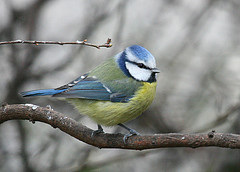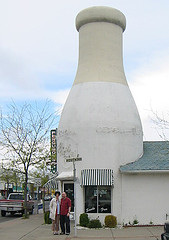|
Imprint: Triarchy Press
Published: 2008 List Price: £20.00 Offer Price: £16.00 Format: Paperback Extent: 232pp. Size: 15 x 23 cm ISBN: 978-0-9550081-6-0 Tags: Innovation, Teamwork, Design Thinking, The Economist Inside Project Red Stripe: Incubating Innovation and Teamwork at The Economist Andrew Carey Book Page About the author Contents Buy the book
Paperback:
|
Flocking
Stewart: 'I'm going to work from home tomorrow, unless anyone has any objections.'
Joanna: 'We'll miss you.' On the way home from hearing Javier talking about people's need to flock from time to time, which he related to the tensions that can build in the course of one family Christmas dinner, never mind over six months in a cockpit, I was reading Arie de Geus's The Living Company. I'vealready quoted him talking about flocking as a prerequisite of organisational learning. In the same chapter he quotes Allan Wilson's suggestion that accelerated evolution takes place intragenerationally in certain species when three characteristics are present:
Pinta digression

Allan Wilson - in the article linked to above - neatly explains the whole blue tit/milk bottle thing if you've ever wondered.
Arie then makes two key assertions. The first is that, 'no one can "command" a bird to flock in a certain direction, because the travel pattern of the flock emerges from its own movement.' We all know that choreographing directional flocking in geese or fish is hard. But the idea that the next movement emerges from the current one is less obvious. In an innovation team, as in all things, it may be helpful to start from movement rather than from stasis. The second is that 'human organisations have resources for evolution'. No quibbling with that. But he expands on this by saying, 'surely, corporate life is not a Greek tragedy in which the outcome is hardwired into the characters by the Olympian gods, and the play can climax only in its inevitable tragic ending'. To take his second assertion first, I'm not so sure. The error, fatal flaw or hamartia, that leads Oedipus unwittingly but unerringly to the awful climax of killing his father and marrying his mother, is still used in contemporary psychotherapy when talking about the scripts that people act out in their lives. Sometimes it really does seem that an individual is hell-bent on his own destruction or on making the same mistakes again and again in different relationships. Often we can link this determination to explicit or unacknowledged beliefs that the individual holds about himself. I see no reason not to extend this analysis to organisations, where a group of individuals can hold equally strong beliefs and assumptions about the organisation, its worth, its direction and its likely end. When organisation culture experts talk about culture as 'the way we do things around here', they refer to a whole range of values and beliefs that inform every aspect of an organisation's operation and can define, unless they are openly challenged, how that organisation will end its days. More Flocking
But to return to Arie's first assertion about directional flocking, I learnt that Craig Reynolds was working two decades ago on replicating flocking behaviour with computer modelling. In thinking about the steering behaviours of a boid (a computer simulation of a single flocking creature) he concluded that three factors are at play:
Furthermore, I found that Bryan Coffman has written about the application of some of these principles to the organisation. Talking about Knowledge Nodes or Knodes, he suggests some rules that each Knode follows in a web or flock of Knodes:
Now there's an interesting prescription for an innovation team. Again, the rules can apply to the way team members work together and to the way the team as a whole relates to the organisation it works for and to the outside world.
----------------------------------------------------------------------------- Credits: Milk bottle: Mykl Roventine Blue tit: Lawrie Phipps Flock: fdecomite |

